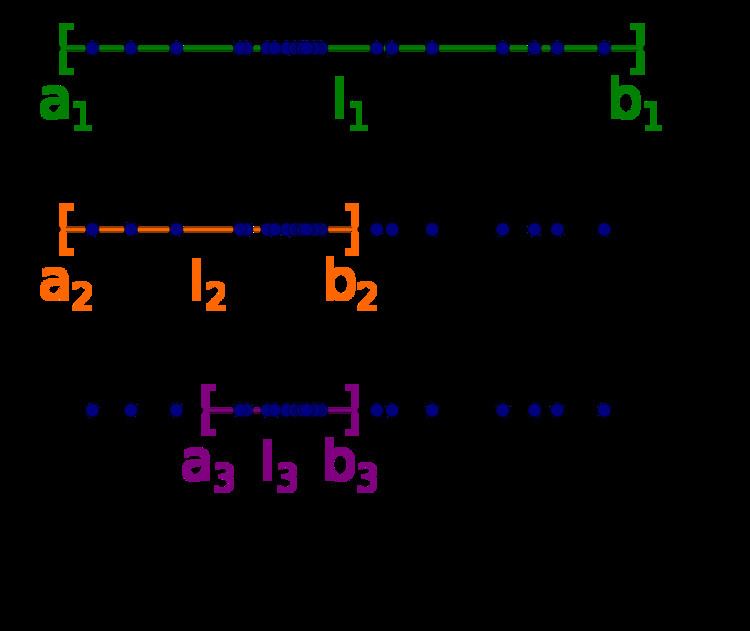 | ||
In mathematics, specifically in real analysis, the Bolzano–Weierstrass theorem, named after Bernard Bolzano and Karl Weierstrass, is a fundamental result about convergence in a finite-dimensional Euclidean space Rn. The theorem states that each bounded sequence in Rn has a convergent subsequence. An equivalent formulation is that a subset of Rn is sequentially compact if and only if it is closed and bounded. The theorem is sometimes called the sequential compactness theorem.
Contents
Proof
First we prove the theorem when
Lemma: Every sequence
Proof: Let us call a positive integer
Now suppose one has a bounded sequence in
Finally, the general case can be reduced to the case of
Alternative proof
There is also an alternative proof of the Bolzano–Weierstrass theorem using nested intervals. We start with a bounded sequence
Because we halve the length of an interval at each step the limit of the interval's length is zero. Thus there is a number
Take a neighbourhood
Sequential compactness in Euclidean spaces
Suppose A is a subset of Rn with the property that every sequence in A has a subsequence converging to an element of A. Then A must be bounded, since otherwise there exists a sequence xm in A with || xm || ≥ m for all m, and then every subsequence is unbounded and therefore not convergent. Moreover, A must be closed, since from a noninterior point x in the complement of A one can build an A-valued sequence converging to x. Thus the subsets A of Rn for which every sequence in A has a subsequence converging to an element of A – i.e., the subsets which are sequentially compact in the subspace topology – are precisely the closed and bounded sets.
This form of the theorem makes especially clear the analogy to the Heine–Borel theorem, which asserts that a subset of Rn is compact if and only if it is closed and bounded. In fact, general topology tells us that a metrizable space is compact if and only if it is sequentially compact, so that the Bolzano–Weierstrass and Heine–Borel theorems are essentially the same.
History
The Bolzano–Weierstrass theorem is named after mathematicians Bernard Bolzano and Karl Weierstrass. It was actually first proved by Bolzano in 1817 as a lemma in the proof of the intermediate value theorem. Some fifty years later the result was identified as significant in its own right, and proved again by Weierstrass. It has since become an essential theorem of analysis.
Application to economics
There are different important equilibrium concepts in economics, the proofs of the existence of which often require variations of the Bolzano–Weierstrass theorem. One example is the existence of a Pareto efficient allocation. An allocation is a matrix of consumption bundles for agents in an economy, and an allocation is Pareto efficient if no change can be made to it which makes no agent worse off and at least one agent better off (here rows of the allocation matrix must be rankable by a preference relation). The Bolzano–Weierstrass theorem allows one to prove that if the set of allocations is compact and non-empty, then the system has a Pareto-efficient allocation.
